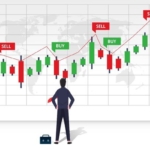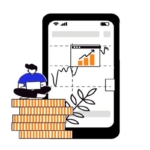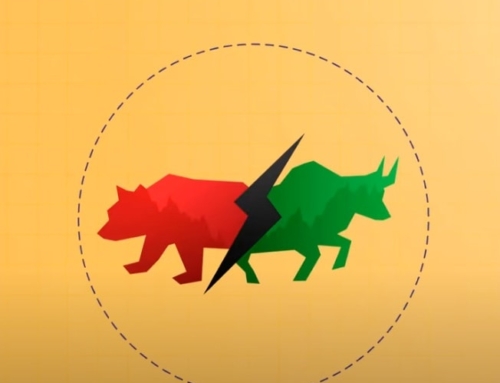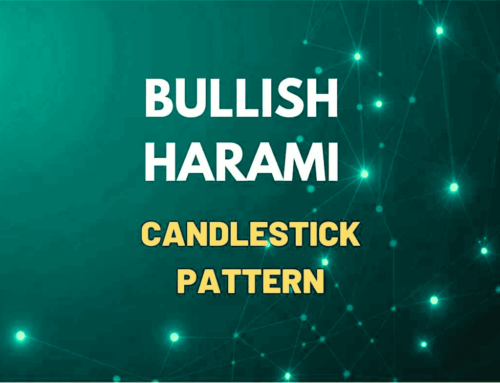What is Return on Equity?
Return on equity is a really important number we need to understand as stock investors. We also understand why Warren Buffet places so much emphasis on the Return on equity.
Although this number doesn’t substitute the understanding of how the intrinsic value calculator works, it gives us an in-depth understanding of what the value of a company is.
The return on equity number is a quick snapshot that we can look at and determine whether the company is something that we should be genuinely interested in.
So, when we value stocks, we value them like the way we value bonds. In 1977, before he became famous and well-known as a Stock and Bond investor, Warren Buffet wrote an article for Fortune magazine.
In this article, he talks about how inflation eats away at bonds and equities, which is contrary to what John Burr Williams wrote in his Harvard thesis and also goes against what Benjamin Graham had written about in, “The Intelligent Investor”.
It’s an interesting article to read simply for that fact because he goes against the grain on what has been written by these two prominent investment authors and I would hence read it for that reason alone. He also talks about how he values stocks and bonds similarly.
The reason I mentioned the above is that, to understand how return on equity works, we’ve to understand how he’s valuing stocks and bonds. So, when we look at a bond, the value of that bond is the money that we’re going to get throughout our ownership of it.
When we figure out the returns out of it, we discount it back to what the present-day value is. Further, when we deal with a bond, we deal with coupon payments, which are paid semi-annually, and then after the term expires on the bond, we get our Par value back on the bond, which is typically a thousand dollars.
Now, when we deal with stocks, it’s very similar except that, instead of receiving Bi-annual, coupon payments, we receive Quarterly dividend payments. Further, instead of receiving a par value back, what we receive in the case of a share is based on the book value. Hence what matters is how much did the book value turn into by the time we go ahead and sell the shares.
Now, if we never plan on selling the shares, then that book value will hopefully keep on growing and that, in turn, will affect the value of our stock. With a bond, we’re dealing with a fixed coupon payment and with stocks, we’re dealing with a variable dividend payment, depending on how the company wants to pay us.
Whenever the bond matures, since there’s a term limit, we get our par value back, but with stocks it’s indefinite. We’re also basing the value of a stock on how the book value is growing and hence they’re very similar.
Similar to finding the intrinsic value using the calculator that we had, in Course 2 and Unit 3, we use a discount rate or discount calculator when we value a bond.
It is a very similar technique. The reason that all this is important when we’re understanding how the return equity number works are that the book value changes. Let’s say that we have a generic company called the company ABC and we know that the company is trading at a premium or a discount to that company’s book value.
Let’s suppose that the company ABC has a book value of $10 a share. The way the company pays dividends and its growth, its equity or book value, and future growth projections, is what will determine how much people are generally willing to pay over or below the book value.
The rate at which they add more money to their book value is also what will determine how much investors are willing to pay over or below the book value. Let’s say the book value is $10 right now. If they add a dollar of book value to the company in a year, that will determine if the investors are willing to pay over or below the book value.
So let me demonstrate this. For example, let’s say the company ABC had earnings per share (EPS) of $5. Let us assume that this company could grow its book value by $5 in a year. Hence the book value would become $10 and let’s also assume that the company doesn’t pay a dividend.
All the earnings would then go into the equity of the business. So, if they have an EPS of $5 and they retain all of those earnings back into the business, the book value next year should be $15, which would be a substantial growth for the business.
If the market price is $10 next year and they’ve added $5 to their book value, the market will factor in that and will value the company at least $15 a share.
Hence we see that as the book value grows, the market price goes up automatically. The change in the book value over any given year is equal to the intrinsic value change in that company. In terms of incremental numbers, we see that in this case there was a 50% gain because the company was able to add $5 to the book value.
Since we have now understood the basic concept, let’s go ahead and do this again for another company XYZ.
Let’s assume that we have a company XYZ and the book value on company XYZ is $100 a share. We also presume that investors will either pay a premium or a discount to that $100.
Assume that XYZ’s earnings per share are also $5. In this case, since their book value is already high, they can’t make more money beyond that.
In the subsequent year, if Company XYZ adds $5 to the book value, it would result in a growth of only 5% which would be insignificant compared to the rate of growth of company ABC from the previous example.
The point to be noted here is that both the companies had the same EPS. However, since the book value of Company XYZ was already high, another $5 increase in EPS did not make much difference.
This is what is known as the Return on Equity. When we look at our equation for return on equity, it is Net Income divided by the Shareholders’ Equity.
Net income when broken down on a per-share basis is the EPS. Similarly, Equity when taken on a per-share basis is the Book value.
Hence, ROE is nothing but EPS divided by Book value.
If a company has a steady or increasing ROE, it means that the company knows how to reinvest its earnings.
This is important because most stocks retain their earnings in the equity of the business. As investors, whenever we buy a stock, we are repaid either through dividends or by the company plowing back their earnings back into the business.
Return on Equity will be small for companies who frequently retain their earnings by investing them back into their businesses.
There are also companies that pay out all their money through dividends because they don’t know how to reinvest in themselves. Such companies are best to be avoided.
Key Takeaways
- Importance of ROE:
- ROE is a crucial metric for stock investors to understand.
- Warren Buffet emphasizes the significance of ROE in evaluating a company’s value.
- ROE as a Snapshot:
- ROE provides a quick snapshot to determine if a company is worth genuine interest.
- While it doesn’t replace intrinsic value calculations, it offers valuable insights into a company’s worth.
- Valuing Stocks and Bonds:
- Stocks and bonds are valued similarly, as explained by Warren Buffet.
- Understanding how bonds work is essential to comprehend ROE.
- Comparison with Bonds:
- In valuing bonds, returns are calculated based on fixed coupon payments and par value.
- Stocks, on the other hand, involve variable dividend payments and book value growth.
- Book Value and Stock Value:
- The value of a stock is influenced by the growth of its book value.
- Unlike bonds, stocks don’t have a fixed maturity, and their value depends on book value growth.
- Incremental Change in Book Value:
- The change in the book value over time reflects the intrinsic value change in a company.
- Investors are willing to pay a premium or a discount based on the company’s ability to add value to its book value.
- Demonstration with Examples:
- Demonstrations with examples of two hypothetical companies (ABC and XYZ) show how book value growth affects market price.
- A company’s ability to increase book value influences investor perception and market valuation.
- ROE Equation:
- ROE (Return on Equity) is calculated as Net Income divided by Shareholders’ Equity.
- ROE = EPS (Earnings Per Share) / Book Value.
- Significance of Steady or Increasing ROE:
- Steady or increasing ROE indicates a company’s effectiveness in reinvesting its earnings.
- Companies with a good ROE are proficient in utilizing their retained earnings.
- Understanding Return on Equity:
- ROE is crucial for investors as it reflects a company’s ability to reinvest profits effectively.
- Companies with low ROE may not know how to reinvest and might be better avoided.
Howdy!
If you’re here for the first time, let’s get introduced.
VRD Nation is India’s premier stock market training institute and we (Team VRD Nation) are passionate about teaching each and every aspect of investing and trading.
If you’re here for the first time, don’t forget to check out “Free Training” section where we have tons of free videos and articles to kick start your stock market journey.
Also, we got two awesome YouTube channels where you can continue the learning process.
Must-Read Articles
What is Return on Equity?
Return on equity is a really important number we need to understand as stock investors. We also understand why Warren Buffet places so much emphasis on the Return on equity.
Although this number doesn’t substitute the understanding of how the intrinsic value calculator works, it gives us an in-depth understanding of what the value of a company is.
The return on equity number is a quick snapshot that we can look at and determine whether the company is something that we should be genuinely interested in.
So, when we value stocks, we value them like the way we value bonds. In 1977, before he became famous and well-known as a Stock and Bond investor, Warren Buffet wrote an article for Fortune magazine.
In this article, he talks about how inflation eats away at bonds and equities, which is contrary to what John Burr Williams wrote in his Harvard thesis and also goes against what Benjamin Graham had written about in, “The Intelligent Investor”.
It’s an interesting article to read simply for that fact because he goes against the grain on what has been written by these two prominent investment authors and I would hence read it for that reason alone. He also talks about how he values stocks and bonds similarly.
The reason I mentioned the above is that, to understand how return on equity works, we’ve to understand how he’s valuing stocks and bonds. So, when we look at a bond, the value of that bond is the money that we’re going to get throughout our ownership of it.
When we figure out the returns out of it, we discount it back to what the present-day value is. Further, when we deal with a bond, we deal with coupon payments, which are paid semi-annually, and then after the term expires on the bond, we get our Par value back on the bond, which is typically a thousand dollars.
Now, when we deal with stocks, it’s very similar except that, instead of receiving Bi-annual, coupon payments, we receive Quarterly dividend payments. Further, instead of receiving a par value back, what we receive in the case of a share is based on the book value. Hence what matters is how much did the book value turn into by the time we go ahead and sell the shares.
Now, if we never plan on selling the shares, then that book value will hopefully keep on growing and that, in turn, will affect the value of our stock. With a bond, we’re dealing with a fixed coupon payment and with stocks, we’re dealing with a variable dividend payment, depending on how the company wants to pay us.
Whenever the bond matures, since there’s a term limit, we get our par value back, but with stocks it’s indefinite. We’re also basing the value of a stock on how the book value is growing and hence they’re very similar.
Similar to finding the intrinsic value using the calculator that we had, in Course 2 and Unit 3, we use a discount rate or discount calculator when we value a bond.
It is a very similar technique. The reason that all this is important when we’re understanding how the return equity number works are that the book value changes. Let’s say that we have a generic company called the company ABC and we know that the company is trading at a premium or a discount to that company’s book value.
Let’s suppose that the company ABC has a book value of $10 a share. The way the company pays dividends and its growth, its equity or book value, and future growth projections, is what will determine how much people are generally willing to pay over or below the book value.
The rate at which they add more money to their book value is also what will determine how much investors are willing to pay over or below the book value. Let’s say the book value is $10 right now. If they add a dollar of book value to the company in a year, that will determine if the investors are willing to pay over or below the book value.
So let me demonstrate this. For example, let’s say the company ABC had earnings per share (EPS) of $5. Let us assume that this company could grow its book value by $5 in a year. Hence the book value would become $10 and let’s also assume that the company doesn’t pay a dividend.
All the earnings would then go into the equity of the business. So, if they have an EPS of $5 and they retain all of those earnings back into the business, the book value next year should be $15, which would be a substantial growth for the business.
If the market price is $10 next year and they’ve added $5 to their book value, the market will factor in that and will value the company at least $15 a share.
Hence we see that as the book value grows, the market price goes up automatically. The change in the book value over any given year is equal to the intrinsic value change in that company. In terms of incremental numbers, we see that in this case there was a 50% gain because the company was able to add $5 to the book value.
Since we have now understood the basic concept, let’s go ahead and do this again for another company XYZ.
Let’s assume that we have a company XYZ and the book value on company XYZ is $100 a share. We also presume that investors will either pay a premium or a discount to that $100.
Assume that XYZ’s earnings per share are also $5. In this case, since their book value is already high, they can’t make more money beyond that.
In the subsequent year, if Company XYZ adds $5 to the book value, it would result in a growth of only 5% which would be insignificant compared to the rate of growth of company ABC from the previous example.
The point to be noted here is that both the companies had the same EPS. However, since the book value of Company XYZ was already high, another $5 increase in EPS did not make much difference.
This is what is known as the Return on Equity. When we look at our equation for return on equity, it is Net Income divided by the Shareholders’ Equity.
Net income when broken down on a per-share basis is the EPS. Similarly, Equity when taken on a per-share basis is the Book value.
Hence, ROE is nothing but EPS divided by Book value.
If a company has a steady or increasing ROE, it means that the company knows how to reinvest its earnings.
This is important because most stocks retain their earnings in the equity of the business. As investors, whenever we buy a stock, we are repaid either through dividends or by the company plowing back their earnings back into the business.
Return on Equity will be small for companies who frequently retain their earnings by investing them back into their businesses.
There are also companies that pay out all their money through dividends because they don’t know how to reinvest in themselves. Such companies are best to be avoided.
Key Takeaways
- Importance of ROE:
- ROE is a crucial metric for stock investors to understand.
- Warren Buffet emphasizes the significance of ROE in evaluating a company’s value.
- ROE as a Snapshot:
- ROE provides a quick snapshot to determine if a company is worth genuine interest.
- While it doesn’t replace intrinsic value calculations, it offers valuable insights into a company’s worth.
- Valuing Stocks and Bonds:
- Stocks and bonds are valued similarly, as explained by Warren Buffet.
- Understanding how bonds work is essential to comprehend ROE.
- Comparison with Bonds:
- In valuing bonds, returns are calculated based on fixed coupon payments and par value.
- Stocks, on the other hand, involve variable dividend payments and book value growth.
- Book Value and Stock Value:
- The value of a stock is influenced by the growth of its book value.
- Unlike bonds, stocks don’t have a fixed maturity, and their value depends on book value growth.
- Incremental Change in Book Value:
- The change in the book value over time reflects the intrinsic value change in a company.
- Investors are willing to pay a premium or a discount based on the company’s ability to add value to its book value.
- Demonstration with Examples:
- Demonstrations with examples of two hypothetical companies (ABC and XYZ) show how book value growth affects market price.
- A company’s ability to increase book value influences investor perception and market valuation.
- ROE Equation:
- ROE (Return on Equity) is calculated as Net Income divided by Shareholders’ Equity.
- ROE = EPS (Earnings Per Share) / Book Value.
- Significance of Steady or Increasing ROE:
- Steady or increasing ROE indicates a company’s effectiveness in reinvesting its earnings.
- Companies with a good ROE are proficient in utilizing their retained earnings.
- Understanding Return on Equity:
- ROE is crucial for investors as it reflects a company’s ability to reinvest profits effectively.
- Companies with low ROE may not know how to reinvest and might be better avoided.




















Leave A Comment